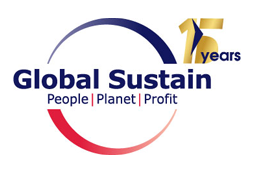
EY
Member: Silver
Since: 18.02.2010
Since: 18.02.2010
Certified Auditors Accountants S.A.
Chimaras 8B, Marousi, 151 25 Athens, Greece
EY: Customer expectations drive up security and sustainability concerns on telecoms risk radar
29.10.2021
Share

- Security up from fifth to second place on Top 10 ranking of telecoms risks
- Sustainability is a new top-five entrant, now identified as a strategic priority
- Infrastructure reach and resilience remains No. 1 risk as network quality focus sharpens
Meanwhile, the Top 10 report sees a new risk emerge at the fifth position: poor management of the sustainability agenda. This is again driven in part by consumer attitudes to environmental, social and governance (ESG) disclosures, with 79% of UK consumers expecting companies to do more to ensure suppliers follow sustainable or ethical practices.3 This issue is also climbing the boardroom agenda. Seventy-four percent of technology, media and entertainment, and telecoms (TMT) CEOs now expect companies to proactively take responsibility for the social and environmental impacts of their operations.4
Tom Loozen, EY Global Telecommunications Leader, says:
“Changing stakeholder expectations are putting sustainability at the heart of the corporate telecoms agenda. At the same time, effective ESG disclosures may become more challenging, as regulators push for more detailed reporting and investors increasingly press companies to report on physical and financial risks from climate change. For operators, this means both tackling energy inefficiencies and incorporating circular economy principles into their business models and service offerings. But it also presents an opportunity to contribute positively to other industries in reducing carbon emissions and even going beyond by, for instance, helping reduce water waste through precision agriculture or materials waste through precision manufacturing.”
Mandate to improve network performance remains No. 1 risk
For the second consecutive year, failure to deliver infrastructure reach and resilience remains the top industry risk. With customers more focused than ever on connectivity in response to the COVID-19 pandemic, improving network coverage and quality continues to loom as the biggest issue facing telcos. Notably, 37% of consumers across Europe and North America say that the fastest broadband speeds are unavailable in their area,5 while the economics of network rollout in remote areas makes it challenging to meet policymakers’ ambitions to build a digital society.
Adrian Baschnonga, EY Global Telecommunications Lead Analyst, says:
“Telecoms networks have withstood higher usage during national lockdowns, but telcos remain under customer and stakeholder pressure to improve network performance and coverage. At the same time, well-funded alternative infrastructure providers are adding to high levels of competitive intensity. As such, telcos’ ability to provide high-quality connectivity remains critical during a period of pronounced social and economic upheaval. The survey confirms that failure to safeguard this core competency is the number one challenge facing them.”
Separately, the inability to scale internal digitization initiatives has fallen from second to sixth position on the ranking. The report highlights that the COVID-19 pandemic compelled many telcos to accelerate their digital transformation plans, and TMT CEOs are going further to deliver new transformation initiatives and investments. However, risks remain, as multiple transformation programs vie for boardroom attention and challenges around customer acceptance of digital tools persist. Indeed, 54% of consumers globally say that they still favor traditional call centers for broadband queries.6
Health crisis continues to challenge supply chains
Debuting at fourth position on the risk radar is the failure to mitigate supply chain disruption. The report notes that the pandemic has put network and customer premise equipment (CPE) supply chains under unprecedented strain, with lockdowns limiting the availability of engineers and higher demand contributing to the chipset crunch. Government restrictions on vendors deemed to be high risk are also continuing to disrupt long-term 5G deployment plans, while new technology cycles are disaggregating established supply chains.
Loozen says: “Looking at the Top 10 risks overall, it is clear that reverberations from the pandemic continue, not least in the form of greater government and regulatory intervention; geopolitical tensions that place 5G at the heart of an ongoing-technology cold war; and a mounting capital expenditure burden in the wake of network modernization. But a recovery in share prices means telcos are generally much better placed to address their challenges at a time when demand for connectivity has never been higher.”
The full 2021 Top 10 risks in telecoms are:
- Failure to ensure infrastructure reach and resilience
- Underestimating changing imperatives in privacy, security and trust
- Failure to redesign workforce structure and skill sets
- Failure to mitigate supply chain disruption
- Poor management of the sustainability agenda
- Inability to scale internal digitization initiatives
- Ineffective engagement with external ecosystems
- Failure to maximize value of infrastructure assets
- Failure to take advantage of new business models
- Inability to adapt to changing regulatory landscape
Article Source: Website Newsroom









.jpg)







.jpg)




















1.jpg)

.jpg)

.jpg)


1.jpg)




















1.jpg)







1.jpg)
1.jpg)





.jpg)



.jpg)











